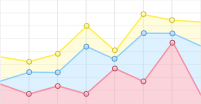| Citation: | Chenkai Guo, Peng Wu. THE PERSISTENCE OF AN AGE-STRUCTURED SYPHILIS MODEL[J]. Journal of Applied Analysis & Computation, 2026, 16(1): 296-311. doi: 10.11948/20250094 |
THE PERSISTENCE OF AN AGE-STRUCTURED SYPHILIS MODEL
-
Abstract
Syphilis, a highly infectious bacterial infection, poses a significant health threat globally due to its high morbidity and mortality rates. Predominantly transmitted through sexual contact, the age distribution among hosts plays a pivotal role in the disease transmission dynamics. In this paper, we first formulate an age-structured epidemic model with four infection stages (primary, secondary, latent and tertiary) and then derive the explicit expression of the basic reproduction number by using the next generation equation. According to the definition of the persistence and applying advanced mathematical techniques, including multiple integral reordering, variable transformations, Laplace transforms, and the method of contradiction, we not only prove the weak persistence but also the strong persistence of the disease.
-
Keywords:
- Syphilis /
- age-structured model /
- the basic reproduction number /
- persistence
-

-
References
[1] D. Blackwell and L. Dubins, A converse to the dominated convergence theorem, Illinois J. Math., 1963, 7, 508-514. [2] M. Cao, J. Zhao, J. Wang and R. Zhang, Dynamical analysis of a reaction-diffusion vector-borne disease model incorporating age-space structure and multiple transmission routes, Commun. Nonlinear Sci. Numer. Simulat., 2023, 127, 107550. doi: 10.1016/j.cnsns.2023.107550 [3] V. V. Capasso, Mathematical Structures of Epidemic Systems, New York, NY: Springer Science & Business Media, 2008. [4] G. Chen, Disease persistence for a kind of age-structured epidemic models, Appl. Math. J. Chinese Univ. Ser. A, 2007, 22, 253-262. doi: 10.1007/s11766-007-0301-7 [5] Z. Feng, W. Huang and C. Castillo-Chavez, Global behavior of a multi-group SIS epidemic model with age structure, J. Differential Equations, 2005, 218, 292-324. doi: 10.1016/j.jde.2004.10.009 [6] H. Freedman and P. Moson, Persistence definitions and their connections, Proc. Amer. Math. Soc., 1990, 109, 1025-1033. doi: 10.1090/S0002-9939-1990-1012928-6 [7] H. Freedman, S. Ruan and M. Tang, Uniform persistence and flows near a closed positively invariant set, J. Dyn. Differ. Equations, 1994, 6, 583-600. doi: 10.1007/BF02218848 [8] A. Gumel, J. Lubuma, O. Sharomi and Y. Terefe, Mathematics of a sex-structured model for syphilis transmission dynamics, Math. Methods Appl. Sci., 2017, 23, 1-26. [9] J. Hale and P. Waltman, Persistence in infinite-dimensional systems, SIAM J. Math. Anal., 1989, 20, 388-395. doi: 10.1137/0520025 [10] J. Huang, H. Kang, M. Liu, S. Ruan and W. Zhuo, Stability analysis of an age-structured epidemic model with vaccination and standard incidence rate, Nonlinear Anal. RWA, 2022, 62, 103525. [11] M. Iannelli, Mathematical Theory of Age-Structured Population Dynamics, Appl. Math. Monographs C. N. R., Vol. 7, Pisa: Giadini Editori e Stampatori, 1994. [12] E. Iboi and D. Okuonghae, Population dynamics of a mathematical model for syphilis, Appl. Math. Model., 2016, 40, 3573-3590. doi: 10.1016/j.apm.2015.09.090 [13] H. Inaba, Age-Structured Population Dynamics in Demography and Epidemiology, New York, NY: Springer, 2017. [14] W. O. Kermack and A. G. McKendrick, A contribution to the mathematical theory of epidemics, Proc. R. Soc. Lond. A, 1927, 115, 700-721. doi: 10.1098/rspa.1927.0118 [15] A. McKendrick, Applications of mathematics to medical problems, Proc. Edinburgh Math. Soc., 1926, 44, 98-130. [16] K. Okuwa, H. Inaba and T. Kunyia, Mathematical analysis for an age-structured SIRS epidemic model, Math. Biosci. Eng., 2019, 16, 6071-6102. doi: 10.3934/mbe.2019304 [17] H. Thieme, Disease extinction and disease persistence in age structured epidemic models, Nonlinear Anal., 2001, 47, 6181-6194. doi: 10.1016/S0362-546X(01)00677-0 [18] J. Wang, J. Lang and X. Zou, Analysis of an age structured HIV infection model with virus-to-cell infection and cell-to-cell transmission, Nonlinear Anal. RWA, 2017, 34, 75-96. doi: 10.1016/j.nonrwa.2016.08.001 [19] G. Webb, Theory of Nonlinear Age-Dependent Population Dynamics, New York, NY: Marcel Dekker, 1985. [20] P. Wu and C. Fang, Spatiotemporal dynamics of syphilis in Xinjiang via a demographic-geographic data-validated reaction diffusion model, J. Math. Phys., 2025, 66, 062704. doi: 10.1063/5.0273893 [21] P. Wu and S. Ruan, An age-structured syphilis model, Ⅱ: Optimal control and numerical simulation, Proc. R. Soc. A, 2025, 481. DOI: 10.1098/rspa.2023.0809. [22] P. Wu, X. Wang and H. Wang, Spatial heterogeneity analysis for syphilis in China via a data-validated reaction-diffusion model, Math. Biosci., 2024, 375, 109243. doi: 10.1016/j.mbs.2024.109243 [23] P. Wu, L. Zou and S. Ruan, An age-structured syphilis model, I: Wellposedness and stability, Proc. R. Soc. A, 2025, 481. DOI: 10.1098/rspa.2024.0218. [24] T. Yuan, G. Guan, S. Shen and L. Zhu, Stability analysis and optimal control of epidemic-like transmission model with nonlinear inhibition mechanism and time delay in both homogeneous and heterogeneous networks, J. Math. Anal. Appl., 2023, 526, 127273. doi: 10.1016/j.jmaa.2023.127273 [25] R. Zhang and X. Ren, Lyapunov functions for some epidemic model with high risk and vaccinated class, Appl. Math. Lett., 2025, 163, 109437. doi: 10.1016/j.aml.2024.109437 [26] X. Zhang, S. Li, Y. Yuan, et al., Effect of discontinuous harvesting on a diffusive predator-prey model, Nonlinearity, 2024, 37, 115016. doi: 10.1088/1361-6544/ad7fc3 [27] Z. Zhang, D. Wu and N. Li, Predator invasion in a spatially heterogeneous predator-prey model with group defense and prey-taxis, Math. Comput. Simulation, 2024, 226, 270-282. doi: 10.1016/j.matcom.2024.07.014 [28] X. Zhao, Dynamical Systems in Population Biology, 2nd Ed., New York, NY: Springer, 2017. [29] L. Zhi, J. Yang and M. Martcheva, Age structured epidemic modeling, Springer Nature, 2020, 52. [30] L. Zhu, Y. Ding and S. Shen, Green behavior propagation analysis based on statistical theory and intelligent algorithm in data-driven environment, Math. Biosci., 2025, 379, 109340. doi: 10.1016/j.mbs.2024.109340 [31] L. Zou, S. Ruan and W. Zhang, An age-structured model for the transmission dynamics of Hepatitis B, SIAM J. Appl. Math., 2010, 70, 3121-3139. doi: 10.1137/090777645 -
-




 DownLoad:
DownLoad: